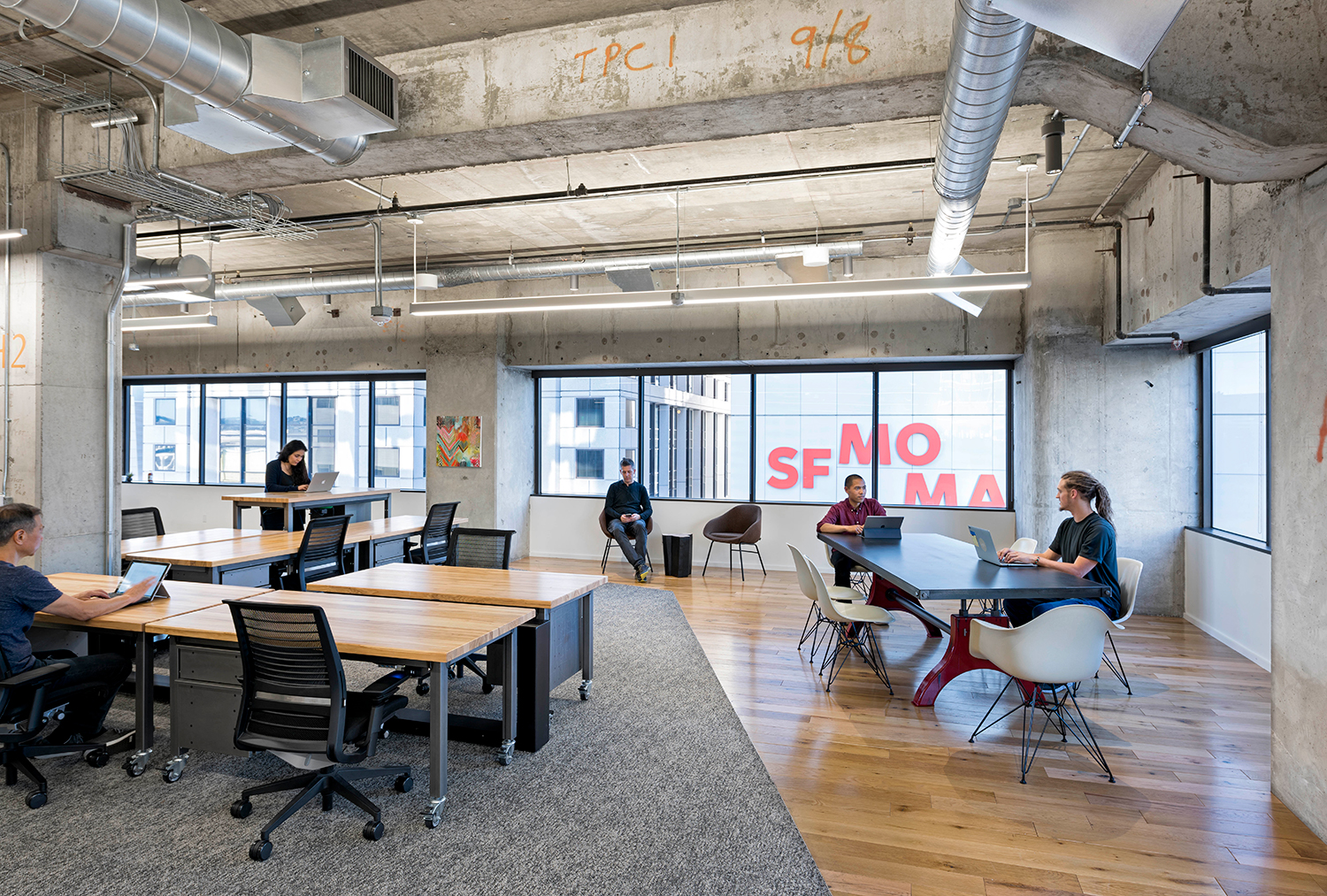Is it Time for the Hammer to Come Down on Work from Home (WFH) Policies and Mandate that Employees Return to the Office?
Is it time to call it quits on one of the greatest experiments in employee management?
After more than two years of allowing employees to Work from Home due to the Covid pandemic, many companies are saying, “Time’s up” – we need you to return to the office.
Here are some prominent businesses that have sought to bring employees back – with many encountering varying degrees of pushback from workers who want to keep their existing WFH policies in place.
· Amazon
As Amazon called on its office employees to return to the physical office, over 30,000 remote workers organized themselves on a Slack channel dedicated to Remote Advocacy. In May 2023, labor organizers estimated that 1,000 of these employees walked off the job to protest the company’s mandatory return-to-the-office rules.
· Apple
Apple was one of the first to allow working from home during the pandemic, as well as one of the first to ask employees to return to the office – for at least three days a week – starting in September 2022. The memo from CEO Tim Cook was met with protest by an employee group called Apple Together that demanded managers be given the option to allow “location flexible work.”
This spring, Apple recalibrated its message, recasting its policy as a “pilot program,” which requires its employees to return to the office on Mondays, Tuesdays, and Thursdays starting May 23, 2023.
· Disney
Returning Disney CEO Robert Iger announced a 4-day-a-week return to the office in a January 2023 email. Starting March 1, Disney employees working from home were expected to return to the office Monday through Thursday.
· Farmer’s Group
The insurance giant, Farmer’s Group, abruptly changed its work-from-home policies when incoming CEO Raul Vargas announced that Farmer’s employees would need to work in-office three days a week, a move that affects about 60% of the company’s 22,000 US employees. There was considerable dissent, particularly among workers who had moved away from the office during the pandemic.
Google announced its plans to transition from WFH to a hybrid work model back in April 2022. In the new policy, workers would be asked to come into the office three days a week. A year later, the company appears to be policing this policy more aggressively, according to a CNBC report that notes that Google is now tracking in-office attendance as part of its employee performance reviews.

· JPMorgan
JPMorgan, the largest US bank, has requested that all senior bank leaders return to in-office work 5 days a week, saying in a memo to staff that “our leaders play a critical role in reinforcing our culture and running our businesses.” Lower-level staff will still be allowed to work three days in the office and two days offsite.
· Tesla
Elon Musk was characteristically blunt in his communications to Tesla office workers that remote work was ending in a series of June 2022 memos sent to employees:
Subject: Remote work is no longer acceptable (sic)
Anyone who wishes to do remote work must be in the office for a minimum (and I mean *minimum*) of 40 hours per week or depart Tesla. This is less than we ask of factory workers.
This was followed up with:
The more senior you are, the more visible must be your presence. That is why I lived in the factory so much – so that those on the line could see me working alongside them. If I had not done that, Tesla would long ago have gone bankrupt.
· Salesforce
In a big contrast to Tesla’s return-to-office mandate, Salesforce is dangling a carrot to workers, offering a $10 donation to the local charity of their choice for each day they come into the office.
· Zoom
When the San Jose-based teleconferencing company Zoom announced this month that they were asking its employees to return to the office at least two days a week, news organizations around the world delighted in the idea that if Zoom – of all companies – is asking employees to return to the office as part of what it calls a “structured hybrid approach” then work from home is most definitely over. Yes, we can appreciate the irony. But the policy only applies to employees living within a 50-mile radius of the office, and it’s only 2 days a week.
Of course, companies are not all in lock-step in mandating that employees return to work in the office. Some companies are going in the opposite direction, e.g. doubling down on remote work policies.
· The Counter Example: Yelp
Like other pure tech companies, including Airbnb and Slack, Yelp is going in the other direction – it’s been closing or shrinking its major office locations, including those in New York, Chicago, Phoenix, and Washington DC, in favor of expanding the use of remote work. (It will maintain offices in San Francisco, Toronto, and London.) In the view of Yelp co-founder and CEO Jeremy Stoppelman, the majority of its nearly 5,000 workers prefer remote work. He feels that pushing them into hybrid office work schedules is the “worst of both worlds.”
There are Some Disadvantages of Working from Home that (Just about) Everyone Can Agree On
Do company managers asking for employees to return to in-office have a point?
It depends, of course, but it appears that even die-hard work-from-home employees can agree that WFH has some serious disadvantages. Here are two examples:
· Teleconferencing Fatigue
Teleconferencing fatigue, also commonly called Zoom Fatigue, is a common phenomenon where work-from-home employees can get overwhelmed by trying to concentrate on back-to-back virtual meetings, including one-on-one meetings with the manager, cross-team meetings with colleagues, sub-group project meetings, and virtual social gatherings designed to replace in-person beer and pizza parties.
Researchers at WebEx found that remote workers can experience significant virtual meeting fatigue, reporting that “81% of knowledge professionals and executives (who) experience physical ailments at the end of each day with video meetings.”
Online meetings may also not be as productive as they seem, according to a study published in Nature by researchers at Microsoft, who found that information workers who over-relied on email and messaging systems were less able to focus and convey complex information concepts compared to face-to-face interactions.

· Working Longer Hours from Home
Many work-from-home employees believe that, despite skepticism by their managers, they are working harder and putting in longer hours at home compared to when they worked in the office.
This phenomenon appears to be confirmed by a Microsoft report, which dubs the work habits of remote workers as “The Triple Peak Day.” Rather than limiting work to the traditional 9-5 with a lunch break, those working remotely are putting in hours answering emails as soon as they wake up, then continuing to work throughout the day, and finally returning to work after dinner to respond to emails and messages.
These long hours working at home also come with a physical price to pay. Many home office setups are not ergonomically optimized, and many work-from-home employees report a rise in neck and back pain, as well as repetitive strain injuries (RSI).
Managers and Employees Don’t See Eye-to-Eye on the Potential Advantages of Work-from-Home Policies
You like potato and I like potahto
You like tomato and I like tomahto
Potato, potahto, Tomato, tomahto.
Let’s call the whole thing off
But oh, if we call the whole thing off
Then we must part
And oh, if we ever part, then that might break my heart
George Gershwin – Let’s Call The Whole Thing Off
Can managers and employees agree about the advantages and disadvantages of remote work?
Maybe not. Here are a few common areas of major disagreement.
· Many Managers Believe that Remote Workers are Less Productive
We mentioned above that remote workers report they are working longer hours away from the office. Despite this, many managers believe they are less productive compared to workers reporting to the office, a conclusion supported by research from the University of Chicago, which found remote IT workers working at home “had less focus time to perform tasks, and the net effect was a drop in productivity.”
· Companies want Employees in the Office to Collaborate, Innovate, and make Faster Decisions and Implementations
Call it a form of “fear of missing out” (FOMO) if you like, but many bosses believe that collaboration, innovation, and productivity all suffer when employees don’t come face-to-face.
One example of this is taking place at Lyft, where the company is undergoing a serious restructuring. After laying off 1,000 workers, Lyft’s new CEO, David Risher, mandated that employees return to the office three days a week. In a New York Times interview, Risher said, “Things just move faster when you’re face to face… There’s a real feeling of satisfaction that comes from working together at a whiteboard on a problem.”

What Should Worry Companies the Most about Return to In-Office Work Policies? Retention and Recruiting
During the height of the pandemic, many employees took advantage of remote work policies to change their living circumstances. Some sold their commuter cars, others moved further away from the office, and a record number of people adopted dogs and other pets.
A big question for hiring managers is how these remote workers will react when they get the call to return to the office.
In a survey by Unispace, an architecture and planning consultancy for commercial real estate clients, they found that over 72% of companies have mandated that employees return to in-office work at least a few days per week.
However, this result was accompanied by two statistics that should worry hiring managers.
The first is that 42% of these companies are experiencing higher levels of employee attrition rates than expected.
The second concern is that, according to the Unispace survey, 29% of employers are having difficulty achieving their recruiting goals. In particular, companies found it difficult to recruit talent using remote tools, and, once hired, new employees took longer to get up to speed using virtual onboarding approaches.
Another survey, The Flex Report (a survey that focuses on flexible work environments), claims that companies with flexible work schedules (e.g. hybrid or WFH) are adding employees at twice the rate of companies that require full-time in-office work.
What about the Youngest Generation Z Workers? Where do they Stand on a Mandatory Return to the Office Policies?
Employers also need to be observant about how the return to in-office work policies are affecting the youngest of employees, the Gen Z generation (e.g. those born between 1997 and 2012), who are also known as “Zoomers.”
The number of Gen Z workers is expected to triple by 2030.
Recently, there have been many reports about how unprepared these youngest workers are, particularly those who were hired remotely during the pandemic and are coming into the office for the first time.
Older workers are bemused to find that many of these younger workers don’t have some basic office tech skills, such as how to operate a copier machine or a document scanner.
These will probably turn out to be bumps in the road that are soon forgotten.
More importantly, what do we know about Gen Z attitudes toward work?
Preliminary research indicates that Zoomers have not yet had the chance to develop the type of sophisticated interpersonal skills needed in the workplace – presumably due to the social isolation they endured during the pandemic.
Employers should endeavor to overcome these social interaction challenges when mentoring Gen Z new hires in the workplace.
Another aspect of Gen Z workers that employers should anticipate is their reputed desire for workplace flexibility. But more data is needed to understand what “flexibility” means in practice for this generation, e.g. does a hybrid schedule working three days in the office and two days at home satisfy this need?
Where is the Soft-Landing Zone in the Office versus Work from Home Debate?
What can we conclude from these different inputs? What will the office look like by the end of the decade?
If we rub the crystal ball, it seems to be telling us that full-time work-from-home policies are falling out of favor with most employers.
In two or three years, most companies will consider in-office work as the default, and allowing workers to work away from the office one or two days a week will be an extra “perk.”
Some companies may follow the lead of Ohio-based J. M. Smucker, the maker of Smucker’s jellies and jams. Smucker has decided it wants employees to report to the office, but rather than coming in for a certain number of days each week, the company is asking its employees to work in the office for a minimum of 22 full weeks a year, a concept it calls “core” weeks.
There will be exceptions to the “return to the office” trend, of course.
In particular, many high-tech industries will likely continue to offer full-time remote work options as a way to secure top talent – but this was actually a fairly commonplace practice among elite programmers and information workers long before the advent of the COVID pandemic.
Companies Who Ask Workers to Return to the Office Need to Prepare
Companies seeking to successfully bring employees back to the office will need to be prepared to address employee concerns. These include:
- Is the area surrounding the office safe these days?
- Are there restaurants or cafes still open near the office?
- Can —bring my pet to work?
- Are there enough desks at work to accommodate everyone comfortably when everyone is there?

Some companies are taking these employee concerns very seriously. The Wall Street Journal reports that some firms are even hiring what they call a CHO, or Chief Happiness Officer, whose responsibility it is to make sure incoming employees are satisfied with their jobs and work environment.
Formaspace is Your Work Environment Partner
If you can imagine it, we can build it, here at our factory headquarters in Austin, Texas.
Take the next step. Contact your local Formaspace representative to see how we can work together to make your workplace more inviting, ergonomic, and productive.








